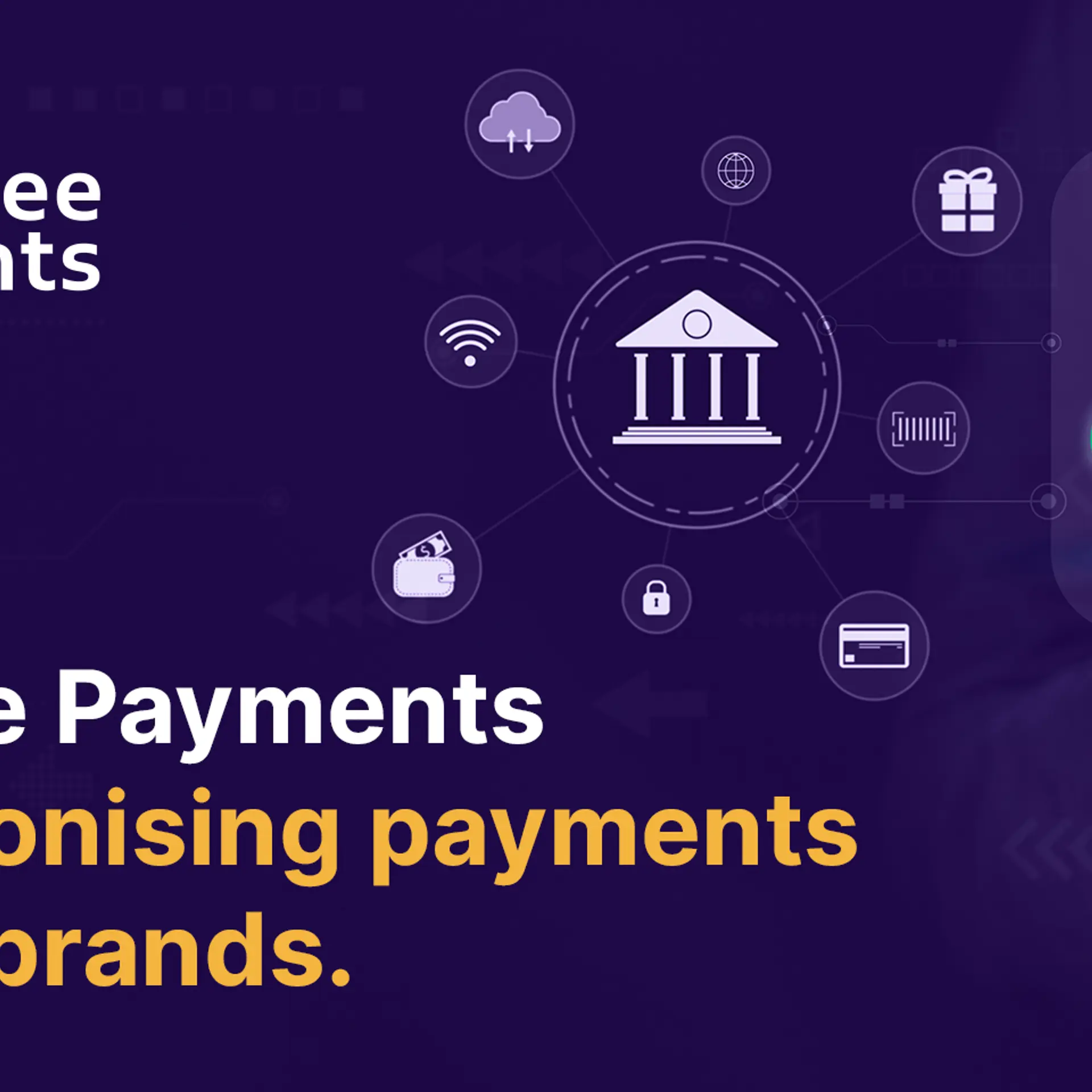[Techie Tuesday] From Microsoft, Facebook, PayPal, Coinbase to Lambda - Namrata Ganatra's journey from fintech to edtech
This week on Techie Tuesday, we feature Namrata Ganatra, CTO of Silicon Valley-based Lambda School. Her learnings, which began with a small startup in India, led her to work with Microsoft, Facebook, PayPal, and now Lambda School.
“Be curious and don’t follow the herd. Your main regrets in life aren’t in the times that you failed to follow the herd; they are the times you failed to leave with your values,” says Namrata Ganatra, CTO, Lambda School, a San-Francisco based online coding bootcamp.
Today, at Lambda, she heads all the engineering and coding efforts. Her focus is building technology to scale for the growth the institution is seeing and to support efforts in market expansion.
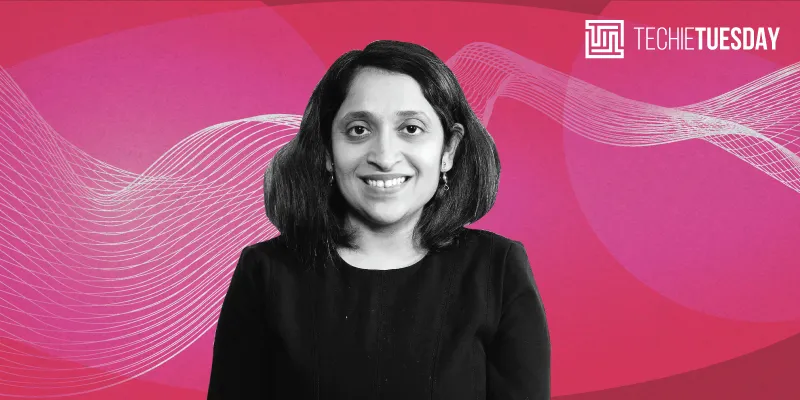
Namrata Ganatra, CTO, Lambda School
The beginnings of Namrata’s coding and tech journey was far removed from the US education sector. With her love for technology blooming in the late 90s, Namrata started out in Indian fintech and payment fields.
“Growing up in Mumbai, I hailed from a middle-class family. We didn’t even have a TV at home, so a computer was completely out of the question. It was during that time that I read a newspaper article on Microsoft and the launch of Windows 98. It intrigued me to read up more about computers, and Bill Gate’s vision of bringing a desktop to every home resonated with me,” says Namrata.
After her 10th grade, instead of opting for the general streams, Namrata decided to pursue a diploma in computer science. “At this point, all my friends were choosing the general categories, like commerce or art. I was the only one in my class who decided to study computers,” says Namrata.
However, there was one huge hurdle to pursuing her interest - her parents couldn’t possibly afford her computer science course. However, her mother, a teacher, was aware of the option of scholarships, and they decided to take that hard route for funds.

Namrata during her college days
The years filled with challenge
Namrata explains that, in those days, scholarships were based on race, gender, and religion. Along with her mother, Namrata visited the offices of trustees and the homes of wealthy people to fill out application forms for every available scholarship.
“It was a pretty daunting experience. I had to work and also run around to line up 10 to 15 scholarship applications. My elder sister was selling electronics door-to-door to bring in some income, and my father had taken a loan of Rs 10,000 to get me a desktop computer; this was in 2004,” says Namrata.
When she finally got to sign up for it, the diploma in computer technology taught her the basics of programming and technology.
“I still remember the day when I tried ‘Hello World’ and the C-programming language. I really fell in love with it all. I couldn't stop talking about it at home, I stayed late into the evenings at college every day, after everyone had left so that I could use the computer labs. I would read programming books at night and practice those programs in the lab the next day. This was my life for three years,” says Namrata.
While learning the ropes of programming, Namrata faced the additional challenge of learning English. Until high school, neither could speak the language nor understand much of it as her schooling was mostly in the native languages.
“I didn’t understand some of the programming concepts that my professors were teaching because they were all using English to instruct. I had to constantly look up the words in the dictionary. I think I worked twice as hard as everyone else to learn computers and English at the same time,” recollects Namrata.
Small beginnings
Graduating in 2005 at the top of her class from the University of Mumbai, Namrata had her choice of job opportunities from large companies like TCS, Wipro, and MDOS. But, she chose to work for a small software startup called MAQ Software.
“They had a small office in Mumbai and one in Seattle. They were the professional collaborative vendor for Microsoft, and would execute end-to-end projects for Microsoft. I chose that company because I wanted to work for Microsoft even if it was only indirectly,” says Namrata.
When she completed a year there, MAQ Software sponsored her work visa to the US, and she landed in Seattle, where she worked onsite for Microsoft.
“During the evenings and at night, I used to work with our offshore team in India because that was my job for about a year and a half. Basically, I had to take the requirements, work with the onsite team, and then execute and lead the projects along with the offshore team,” says Namrata.
Landing the dream job
Soon after, her dream of working for Microsoft came true when they offered her a full-time opportunity at Seattle.
"Microsoft felt like my first real job, and it was a revelation working for a big tech company in the US. I was really fortunate to be put on a brand-new team to build subscription-based billing and a usage-based billing platform. Today, subscriptions are really common for almost all ecommerce platforms. But, in 2007-08, it was a really new concept. I was very lucky to start my career in Microsoft in such a small founding team, instead of being put on a big team such as the Windows or Office team and getting lost in the crowd,” says Namrata.
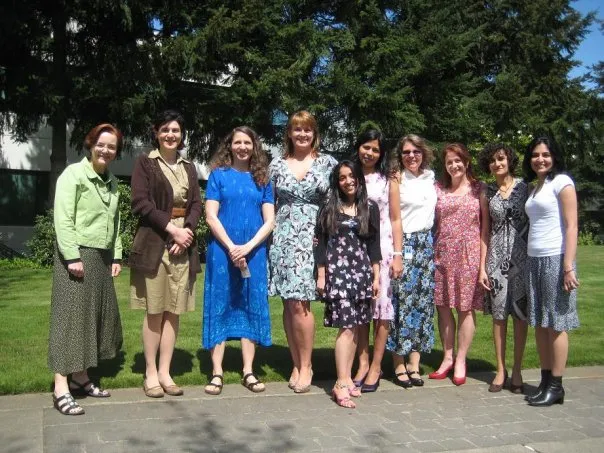
At Microsoft, in Seatle
She was one of the key engineers working on the new billing platform. “I'm really proud to have been part of that key team, because that project is now the backbone of Office 365. I started in a team of two people and when I left Microsoft, it was a team of 200 people,” Namrata recollects.
Things took a sudden professional turn when she finished three years at Microsoft in Seattle. In 2009, the great recession hit the US and jobs were scarce. At that time, Namrata’s fiancé, who had just graduated from the University of Washington, couldn’t get a job in Seattle but secured one in the Bay Area. Thus, within a year, she had moved to San Francisco, California.
Entry to the Valley
Namrata says it was after that move that her entrepreneurial journey kickstarted. To get a feel of the entrepreneurial ecosystem, Namrata joined a small mobile payment startup, Zong, banking on her payments and billing experience at Microsoft. It was her first time working for an open-source stack, vastly different from the Microsoft technology stack which was known for its privacy.
In 2010, Zong was one of the mobile payments providers for Facebook’s Zynga-powered games like FarmVille and CityVille. This was two years before Facebook’s IPO, and these world-building games were all the rage. Users were entranced with the idea of plunging into the virtual world, going shopping inside that world, and creating something. But, to buy those small virtual goods within the games, users generally shied away from giving their credit card or bank details. This was where the mobile payments platform powered by Zong came in.
“I built the integration feature for the different carriers across the world that enables charges on the carrier’s bill instead of on credit cards,” explains Namrata.
Not all smooth sailing
However, that first year at Zong was a scary period, as she describes it. Facebook was getting a good amount of traction, and Zong was the only provider for mobile payments. The week that Namrata joined the team, the servers started crashing, unable to handle the traffic on Facebook.
The team was served an ultimatum by Facebook: fix this within a certain timeframe or we pull the plug.
“It was really an existential threat to our startup. I was put on to the task of figuring out why the servers were crashing every few hours. That was my first assignment. I didn’t go home for three days and spent the nights debugging. I soon resolved the problem," recounts Namrata.
Retaining Facebook as a client also played a key role in Zong’s acquisition by Paypal in 2011. “After going through that startup acquisition, that successful startup exit really opened my eyes to the wealth of opportunities in the Bay Area. When Zong was acquired by PayPal in 2011, Namrata got some wins from that deal, with further exposure to the wealth of opportunities in the Bay Area.
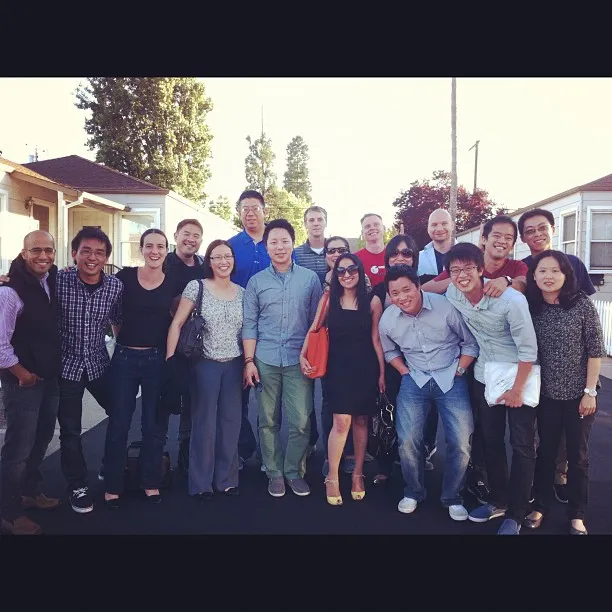
With the PayPal and Zong Team post the latter's acquisition
Larger stakes and starting out as a guide
At PayPal, Namrata went from leading to managing a large team in a big company. “It was a great learning experience, both in terms of technology integration and working with stakeholders. I spent the next two years leading PayPal’s digital goods acquisition,” she says.
It was during her stint at PayPal that Namrata started advising small, early-stage startups. This opened her eyes to the important role an advisor could play in charting a company’s future.
After two years at PayPal, Namrata felt the need to make a change. The integration was complete and she had had her fill of leading and managing a large team. She had the options of joining Facebook or Google. She chose Facebook, influenced by her earlier experience of working with the company through Zong.
Also, others she had worked with were making a move from PayPal to Facebook, too. Facebook then, she says, was very much still a startup, especially compared with the likes of Google.
Following the Facebook bandwagon
“I wanted to move fast, innovate, and apply everything that I had learned, towards being a part of Facebook's growth. That's primarily why I decided to join Facebook,” says Namrata.
At Facebook, Namrata was leading the payments engineering team, a small one comprising four to five members.
“It was a year after Facebook’s IPO and we were still expanding payments in various countries. We were building the payment platforms for Facebook games, ads, peer-to-peer transfer — basically, anything that makes money at Facebook was run on these platforms I was working on, and I was kind of at the centre of it all,” recalls Namrata.
The wealth of experience gathered during those years at Facebook exceeded all her expectations and formed some of her best learnings in engineering leadership, she says. “I really learned some of the best engineering practices on moving fast and at large scale. Some of the people who were in my management chain at Facebook are some of the best leaders and investors in the tech industry today. I learned a lot from working with and watching them,” says Namrata.
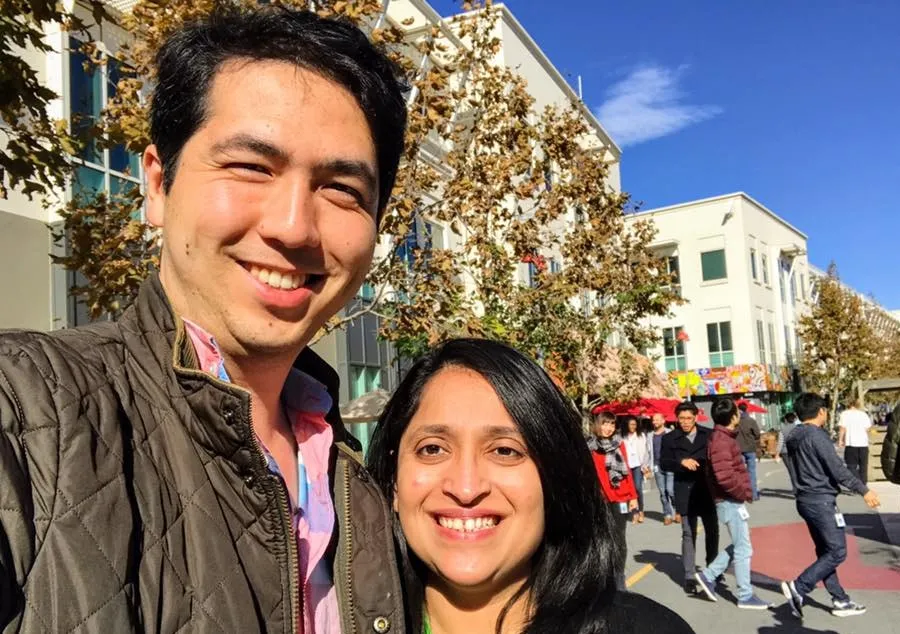
At Facebook's Menlo Park
Starting her C-level journey
Wishing to bring more impact, she decided to move on from Facebook and joined a startup, Stockpile, in a C-level role. Stockpile’s mission was to make financial services or stock accessible to the mass market — a concept that really intrigued and inspired Namrata.
Stockpile’s offerings were targeted at those who are starting out in the stock market or financial services and cannot afford to buy a full stock of, say, Amazon. Through Stockpile, they could choose to invest $10, 20, or whatever amount they wished to get a fraction of stock.
At Stockpile, she not only helped the team build the entire technology platform but also helped the company raise the next level of funding. Namrata explains she was one of the key players in helping the team raise series-C funding.
Those years were also the most challenging times of her career. It was Namrata’s first role at C-level in a startup, and she was constantly feeling that she and the work were falling short.
“It was not growing as fast as I'd have liked. Also, the then-CEO of the company didn't have a growth mindset. Overall, I was just having to work really hard and was getting frustrated. Based on this experience, I drew up the 3 Ps that I now look at before joining a startup — product, people, and potential. If a startup doesn’t check all three boxes, I choose not to get on board,” says Namrata.
Taking off from sharing this key tenet of hers, Namrata stresses that it is necessary for everyone to do their due diligence before taking up an opportunity. “If you're seriously considering a company and if they're equally interested in you, then don't be afraid to ask any questions on growth trajectory and the other numbers that you need to know. Back then, I didn't know that, which is why I didn't ask them all the questions,” she adds.
Entering the world of crypto
After Stockpile, Namrata was looking at amplifying her work in fintech. That is when Coinbase happened. She had heard about the company for a couple of years and had wished to join a crypto blockchain company as she realised the huge potential of the technology to disrupt financial services.
Coinbase’s mission was to build an open financial system for the world. When Namrata joined toward the end of 2017, cryptocurrencies were having a bull run. Bitcoin prices were skyrocketing, and Coinbase was in the news every day.
Though the digital currencies entered a bear market in 2018, the innovation and technology-building involved made for exciting times, says Namrata, adding that they were building things without too much pressure.
“In a bull market, you are just fire-fighting, and millions of users are signing up on a daily basis. In a bear run, there is a lot of room for innovation and you have the time to work on things from the first principles,” she points out.
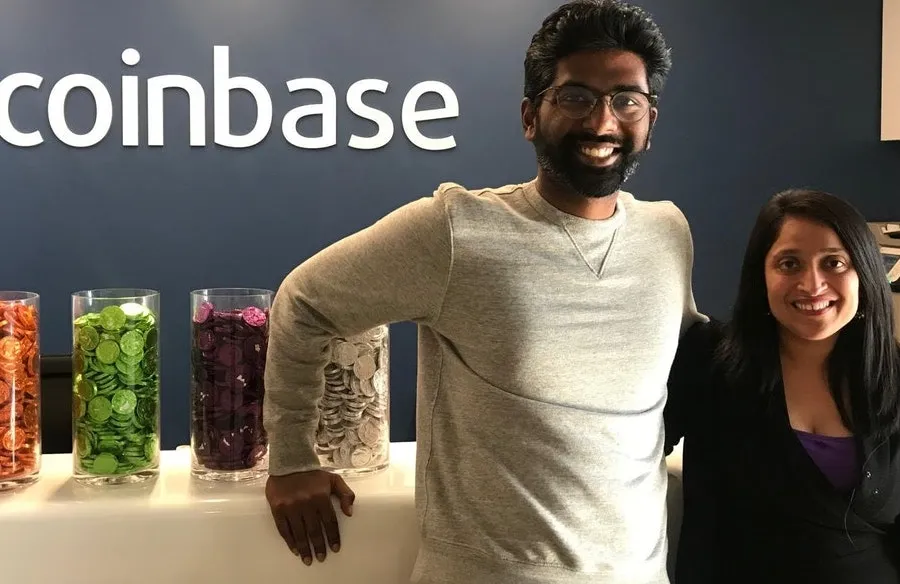
Namrata the day she joined Coinbase
Pursuing her passion
While Namrata was working at Coinbase, she heard about the Lambda School. Though her technology stint had primarily been in the financial sector, Namrata had been always passionate about educational solutions.
“My interest stemmed from when I first came to the US and started earning a good salary. I knew I needed to do something to help young women like myself, who, without a scholarship, would not have access to education. I have always believed in the power of education,” says Namrata.
But, Namrata wasn’t looking to switch jobs when Lambda happened, in July this year. She had simply tweeted about Lambda’s mission to make education accessible and risk-free.
“My immediate reaction on reading about it was that this is exactly the school that I would have myself gone to,” says Namrata. Her tweet caught the eye of Lambda’s Co-Founder and CEO, Austen Allred, who reached out to her with an opportunity to come on board as the CTO.
Deciding to pursue her personal passion, Namrata joined Lambda, where she continues to work towards helping people with raw talent match their skills with high-paying, sustainable careers. “I am now leading the company’s engineering effort to build a technology that will help us scale for the current market growth and also support us in the geographical expansion we are planning,” says Namrata.
She shares that she has also been running a non-profit, the Ashia Foundation, which focuses on providing scholarships for women across ages, races, and religions.
The things that make a difference
Speaking about the qualities she looks for in people for her teams, Namrata says passion for the role and the organisation is primary. “I have always placed passion and grit over qualifications,” she adds.
Another important thing is ownership, she points out, sharing that she places her bet on people who can proactively pick up things and build on ideas with little or no guidance.
In a bit of advice for all techies, Namrata says, ‘be curious and don’t follow the herd’, and adds,
“Every decision that I made was basically towards carving out my own path. And, these decisions were all against the flow.”
Namrata signs off with a couple of dictums for women engineers: have a seat at the table and let your voice be heard.
She says, “When I started out in engineering and technology, I was really intimidated. I was oftentimes the only woman at the managers’ meeting. At a leadership level, things have now changed for the better, but the ratio of men and women in technology is still skewed. I learned the hard way that you have to be in the driver's seat of your own career.”
(Edited by Athirupa Geetha Manichandar)


![[Techie Tuesday] From Microsoft, Facebook, PayPal, Coinbase to Lambda - Namrata Ganatra's journey from fintech to edtech](https://images.yourstory.com/cs/2/a9efa9c02dd911e9adc52d913c55075e/Techietuesdayheadshot800x4001571072914201png?mode=crop&crop=faces&ar=2%3A1&format=auto&w=1920&q=75)
![[Techie Tuesday] From working on Google’s search platform to co-founding Dunzo - the journey of...](https://images.yourstory.com/cs/2/a9efa9c0-2dd9-11e9-adc5-2d913c55075e/techi-tuesday_(800x400)1566210615008.png?fm=png&auto=format&h=100&w=100&crop=entropy&fit=crop)
![[Techie Tuesday] He began coding at 10 and went on to build blockchain-powered phones: meet Pun...](https://images.yourstory.com/cs/2/730b5070-2d6c-11e9-aa97-9329348d4c3e/Techie-tuesday--Pitt-Huang,-CTO,-Pundi-X1563805309282.png?fm=png&auto=format&h=100&w=100&crop=entropy&fit=crop)
![[Techie Tuesday] From building India’s first supercomputer to finding a non-invasive way of det...](https://images.yourstory.com/cs/2/a9efa9c0-2dd9-11e9-adc5-2d913c55075e/Techie-Tuesday-Geetha-Manjunath1560780626901.png?fm=png&auto=format&h=100&w=100&crop=entropy&fit=crop)
![[Techie Tuesday] Sanjeev Barnwal of Facebook-backed Meesho has one advice for coders: ‘get out ...](https://images.yourstory.com/cs/2/a9efa9c0-2dd9-11e9-adc5-2d913c55075e/Sanjeev_800_4001562586046701.jpg?fm=png&auto=format&h=100&w=100&crop=entropy&fit=crop)
![[Techie Tuesday] The unlikely story of Gurteshwar Singh of Karix, a college dropout turned clou...](https://images.yourstory.com/cs/2/a9efa9c0-2dd9-11e9-adc5-2d913c55075e/Final_Gurteshwar-800x4001563200009185.png?fm=png&auto=format&h=100&w=100&crop=entropy&fit=crop)
![[YS Exclusive] Why San Francisco’s coding bootcamp Lambda School is placing its bets on India](https://images.yourstory.com/cs/2/730b50702d6c11e9aa979329348d4c3e/TeamatLambdaSchool1569404013364png?fm=png&auto=format&h=100&w=100&crop=entropy&fit=crop)


